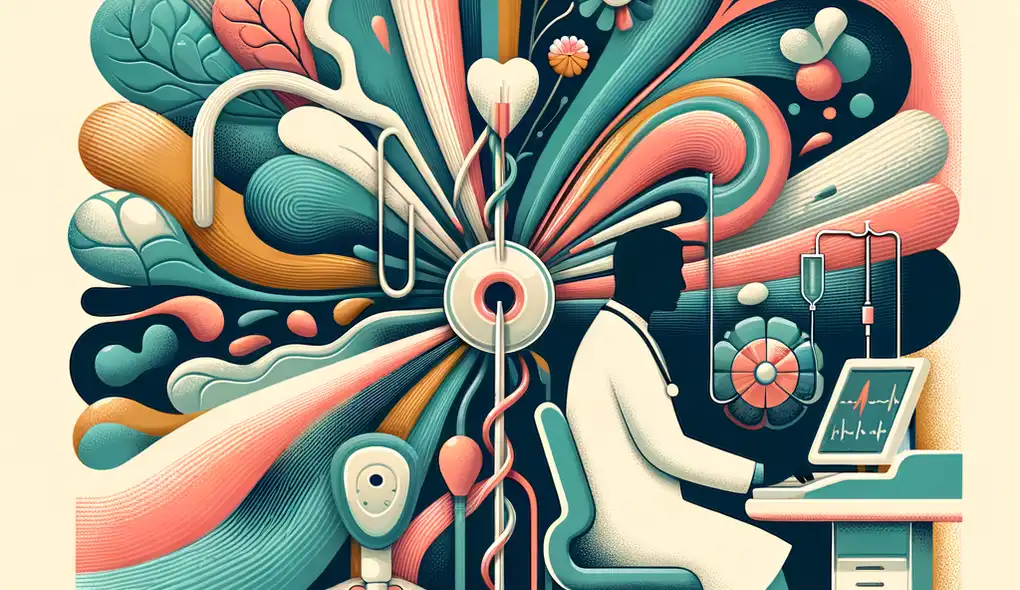How do you interpret diagnostic imaging studies, such as MRI, CT scans, ultrasound, and X-rays?
Interventional Radiologist Interview Questions
Sample answer to the question
Interpreting diagnostic imaging studies is a crucial part of my job as an Interventional Radiologist. I have extensive experience in analyzing MRI, CT scans, ultrasound, and X-rays to identify and diagnose various medical conditions. This involves examining the images, comparing them to normal anatomical structures, and identifying any abnormalities or areas of concern. I collaborate closely with other physicians to discuss treatment plans based on the findings from these imaging studies. Additionally, I prioritize patient safety and comfort during procedures by ensuring accurate and timely interpretation of the images. Overall, my strong analytical and problem-solving skills, along with my attention to detail, enable me to interpret diagnostic imaging studies effectively.
A more solid answer
As an Interventional Radiologist with over 5 years of experience, I possess excellent analytical and problem-solving skills, which are vital for interpreting diagnostic imaging studies. For instance, I recently encountered a complex case where a patient presented with abdominal pain, but the initial MRI scan provided inconclusive results. I meticulously reviewed the images, meticulously comparing them to normal anatomical structures and referenced previous imaging studies to identify an abnormality in the liver. I consulted with a team of gastroenterologists and oncologists to develop an appropriate treatment plan. This collaboration ensured that the patient received prompt and accurate care. Additionally, I prioritize patient safety and comfort during procedures by maintaining clear communication with patients, explaining the imaging process, and addressing any concerns they may have. My attention to detail allows me to identify even the smallest abnormalities in diagnostic imaging studies, ensuring accurate diagnoses and effective treatment plans.
Why this is a more solid answer:
The solid answer addresses all the evaluation areas mentioned in the job description and provides specific examples to support the candidate's skills and experience in interpreting diagnostic imaging studies. However, it can be further improved by discussing the candidate's involvement in quality assurance and improvement initiatives within the radiology department.
An exceptional answer
Interpreting diagnostic imaging studies is not just about analyzing images but also about integrating clinical history, physical examination findings, and laboratory results to provide a comprehensive assessment. In a recent case, a patient with recurrent headaches underwent multiple imaging studies, including CT scans and MRI. While analyzing the images, I noticed incidental findings of cerebral venous sinus thrombosis, which explained the patient's symptoms. I worked closely with a neurologist, hematologist, and radiology team to initiate appropriate management and ensure optimal patient outcomes. To continuously improve my skills, I actively participate in research projects related to imaging protocols and collaborate with engineers to develop advanced image processing techniques that enhance diagnostic accuracy. Furthermore, I actively engage in quality assurance initiatives by conducting chart reviews, providing educational sessions, and implementing protocols to reduce radiation exposure without compromising diagnostic quality. My dedication to excellence, collaborative approach, and commitment to staying updated with advancements in the field set me apart as an exceptional interpreter of diagnostic imaging studies.
Why this is an exceptional answer:
The exceptional answer goes above and beyond in demonstrating the candidate's expertise in interpreting diagnostic imaging studies. It showcases their ability to integrate multiple sources of information, engage in research and quality assurance initiatives, and their commitment to continuous learning and improvement. Additionally, it highlights their collaboration with a multidisciplinary team and their dedication to providing the best possible care to patients.
How to prepare for this question
- Familiarize yourself with different types of imaging modalities and their applications in diagnosing various medical conditions.
- Stay updated with the latest advancements in imaging technology, protocols, and image processing techniques.
- Develop strong analytical and problem-solving skills by practicing image interpretation cases and discussing them with peers or mentors.
- Enhance your collaboration and communication skills by actively engaging with other physicians and specialists in multidisciplinary discussions.
- Pay attention to detail and develop a systematic approach to reviewing images, comparing them to normal anatomical structures, and identifying abnormalities or areas of concern.
What interviewers are evaluating
- Analytical and problem-solving skills
- Attention to detail
- Collaboration with other physicians
- Patient safety and comfort
Related Interview Questions
More questions for Interventional Radiologist interviews